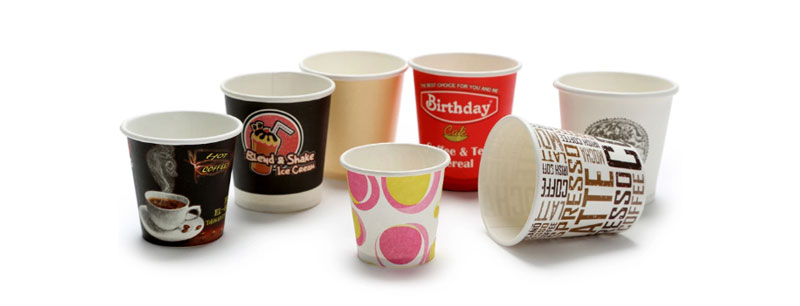In our daily lives, paper cups are everywhere, whether it's for a morning coffee, an afternoon tea, or a quick sip of water. But have you ever wondered how these convenient containers are made? Let's explore the process of making paper cups using a machine.
The primary raw material for paper cups is food - grade paper, which is usually coated with a thin layer of plastic, typically polyethylene (PE). This coating serves two crucial purposes: it makes the paper cup resistant to oil and water, enabling it to hold beverages and soups without leakage, and it also plays a role in the bonding process during production. The choice of paper thickness and the quality of the coating can affect the durability and functionality of the final product.
Before the paper is formed into cups, it often goes through a printing stage. There are three main printing methods: gravure, convex plate, and flat plate. Gravure printing, although high - quality, is costly and thus rarely used these days. Letterpress printing is suitable for large - volume production as it continuously prints on paper rolls. Lithographic printing, on the other hand, involves cutting the paper into pieces before printing, making it a good option for small - quantity production. After the desired patterns, colors, or company logos are printed, a layer of water - gloss treatment is often applied for protection.
A die - cutting machine is used to cut the printed paper roll according to the specific size of the paper cup. This process results in the production of fan - shaped pieces of paper, which are the unfolded shape of the cup wall. These fan - shaped pieces are then collected and sent to the paper cup forming machine.
The forming process is where the magic happens. First, the cup body is formed. The fan - shaped paper is rolled out of the cup mold into the shape of a paper cup. At the seam of the paper, the mold provides heat, causing the PE coating to be thermally fused, thus bonding the edges together.
For the cup bottom, a different - sized paper roll is cut out. The bottom is then glued to the cup body. Immediately after, the mold pushes the mouth of the cup, and the paper at the mouth of the cup is rolled down and fixed by heat to form the rim of the paper cup. These forming steps are incredibly fast and can be completed in just one second.
Once the paper cups are formed, they are sent to an inspection machine. This machine checks whether the shape of the cup is complete and free from damage, and also ensures that the inner surface is clean and free of stains. Only cups that pass this inspection are considered suitable for packaging and distribution.
In conclusion, the process of making paper cups in a machine involves a series of well - coordinated steps, from raw material preparation to the final inspection. This efficient production method allows for the mass - production of paper cups that meet the high - demand in our daily lives.

Paper cups specifications:
150-180 pcs/min
2-12oz (75-300ml) (mold exchangeable)
Paper cups specifications:
50-60 pcs/min
190-320 GSM single/double PE/PLA coated paper
Paper cups specifications:
200-240pcs/min
8-22oz(250-650ml)

